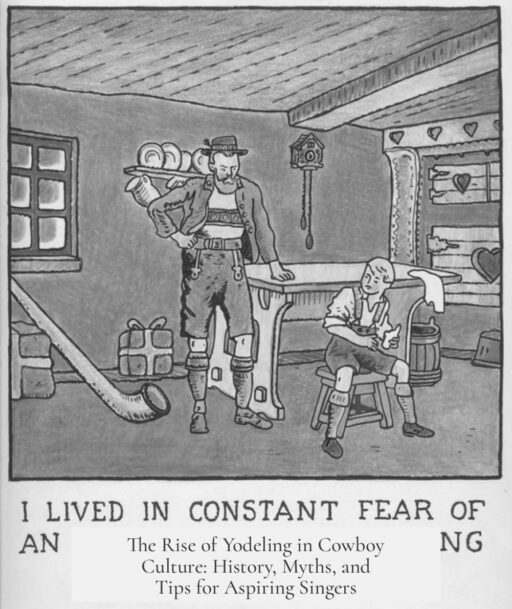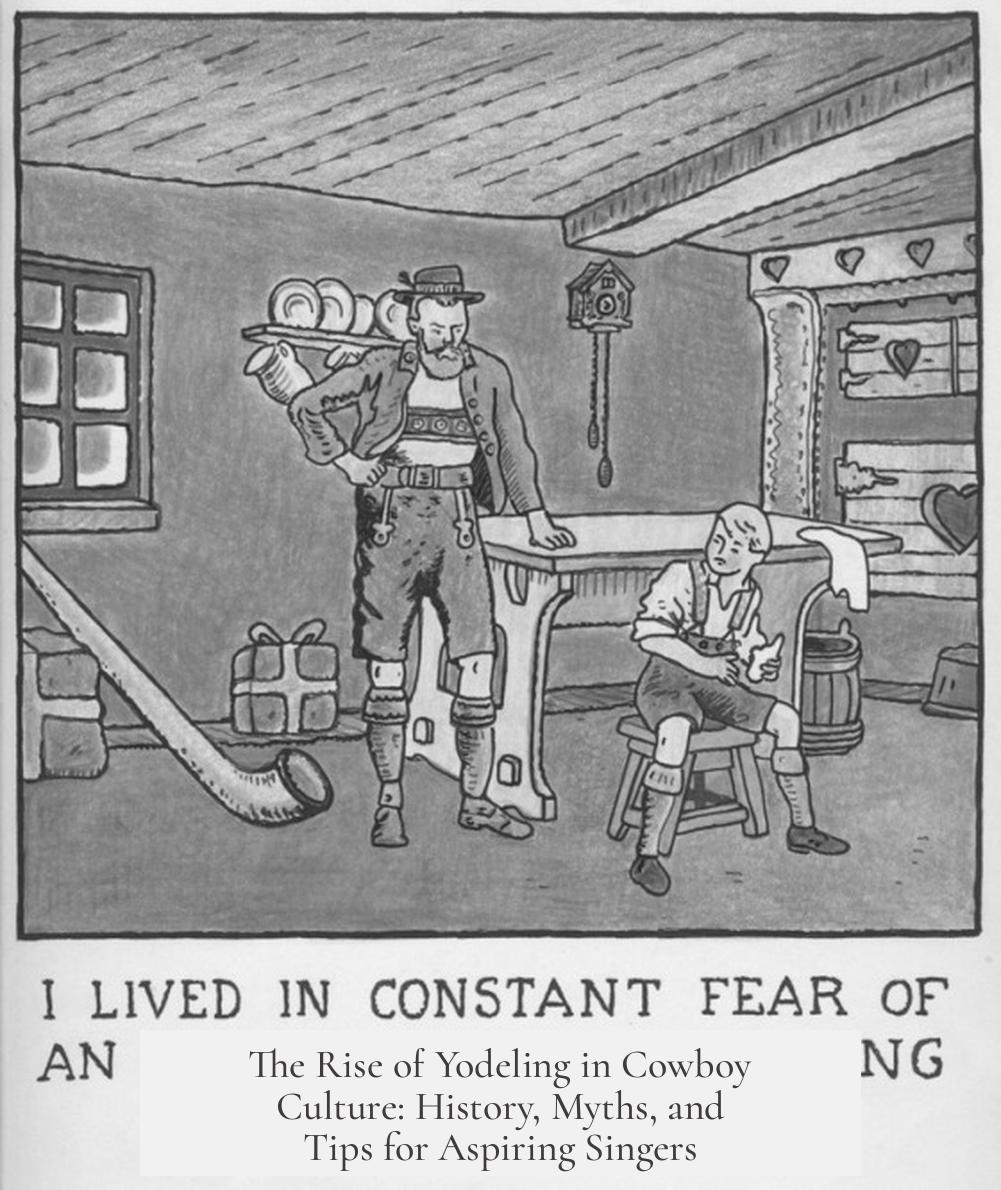Yodeling became associated with old cowboy culture not through authentic cowboy traditions but via its adoption from comic stage performances and minstrel shows that stereotyped ethnic groups, especially Germans. This link was later solidified by early 20th-century musicians who popularized the image of the singing cowboy, blending yodeling with Western themes.
The earliest major collection of cowboy songs, John Lomax’s 1910 Cowboy Songs and Other Frontier Ballads, contains no yodeling. Lomax’s work shaped much of the romantic view of cowboys but reflects their genuine song repertoire, which lacked the yodel technique. Cowboy songs recorded before and after his work focused on ballads, work chants, and folk tunes without the vocal breaks characteristic of yodeling.
Yodeling is a vocal technique involving a rapid switch between chest voice and falsetto, often used in Alpine cattle herding. Its integration into American culture began on comic stages that caricatured immigrant groups, especially Germans. Joseph K. Emmet’s plays, where he portrayed a goofy German immigrant named Fritz, featured yodeling prominently to signify the character’s “Germanness.”
This yodeling stereotype originated far from the American West. Minstrel shows and similar variety acts used yodeling as part of ethnic mockery. At the turn of the 20th century, as ragtime music gained popularity, yodeling distanced itself from strictly Germanic performances. It evolved into an element of broader American music styles, adopting imagery linked to the American South and Black cultural influences.
Gradually, this musical form transitioned into the vernacular of rural America. The minstrel tradition, despite its problematic roots, helped embed yodeling into popular performance genres. The “singing cowboy” concept rose from this cultural mix, becoming a stock character in entertainment venues and radio.
Jimmie Rodgers, a seminal figure in early country music, exemplifies this transition. His recordings showcase frequent yodeling integrated into cowboy-themed songs like “The Cowhand’s Last Ride” and “Yodeling Cowboy.” Rodgers’ success encouraged music producers to promote yodeling among rising hillbilly and country stars, intertwining the vocal style with cowboy imagery.
This association reflects a complex cultural evolution rather than actual historical cowboy practices. While cowboys did sing, the signature yodel became emblematic mostly via theatrical and commercial influences. John Lomax’s romanticized cowboy image fueled popular acceptance of the singing cowboy, but the yodel itself comes from minstrelsy and German-American comedic influences rather than authentic Western folk traditions.
| Aspect | Detail |
|---|---|
| Original Cowboy Songs | Did not feature yodeling; serious ballads and work songs |
| Yodeling Origin | Alpine cattle herders; adopted in German immigrant comedic roles |
| Comic Performance Influence | Minstrel shows used yodeling to stereotyping Germans (Fritz character) |
| Musical Evolution | From ethnic stereotypes to ragtime-inspired American vernacular |
| Singing Cowboy Emergence | Jimmie Rodgers and others blended yodeling with cowboy themes |
| Current Association | Yodeling now embedded in cowboy folklore due to stage and media portrayals |
- Yodeling was not part of traditional cowboy songs but imported from ethnic comedic acts.
- Minstrel shows played a key role in popularizing yodeling within American entertainment.
- The singing cowboy archetype incorporated yodeling through performers like Jimmie Rodgers.
- Yodeling’s cowboy link is cultural construction, not authentic frontier heritage.
The image of cowboys yodeling reflects popular culture’s blending of varied influences. The vocal technique moved from Alpine herders to stage stereotypes, then into American folk and country music. This journey illustrates how entertainment genres reshape and repurpose musical styles to create lasting icons such as the singing cowboy.
How Did Yodeling Become a Thing in Old Cowboy Culture?
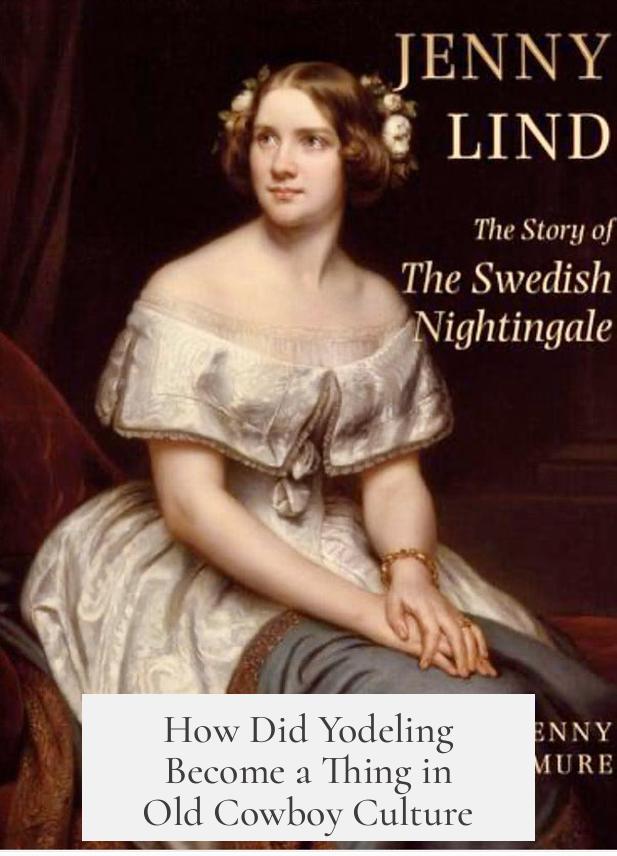
The association of yodeling with old cowboy culture is less about what actual cowboys sang and more about how popular culture shaped their image. While most people picture a cowboy breaking into yodels atop a dusty ridge, the truth is far more surprising—and amusing. So, how exactly did yodeling hitch a ride on the cowboy’s horse? Let’s saddle up and dive into this curious cultural crossover.
First off, early cowboy songs themselves—those tunes riding the winds of the American frontier—didn’t originally include yodeling. The pioneering collector of cowboy ballads, John Lomax, published Cowboy Songs and Other Frontier Ballads in 1910. This landmark collection put cowboy music on the map for English-speaking audiences and ignited the romantic vision of the cowboy as a rugged, nature-bound figure. But if you flip through Lomax’s book, yodeling doesn’t so much as appear.
What’s yodeling, you ask? It’s a vocal technique where the singer switches rapidly between normal singing and falsetto, creating a distinct break and bounce in the voice. Tradition places yodeling roots in the Alpine Alps, where herders used it as a cattle call. Despite its mountain origins, yodeling didn’t belong to the authentic cowboy soundtrack just yet.
The Comic Roots of Yodeling
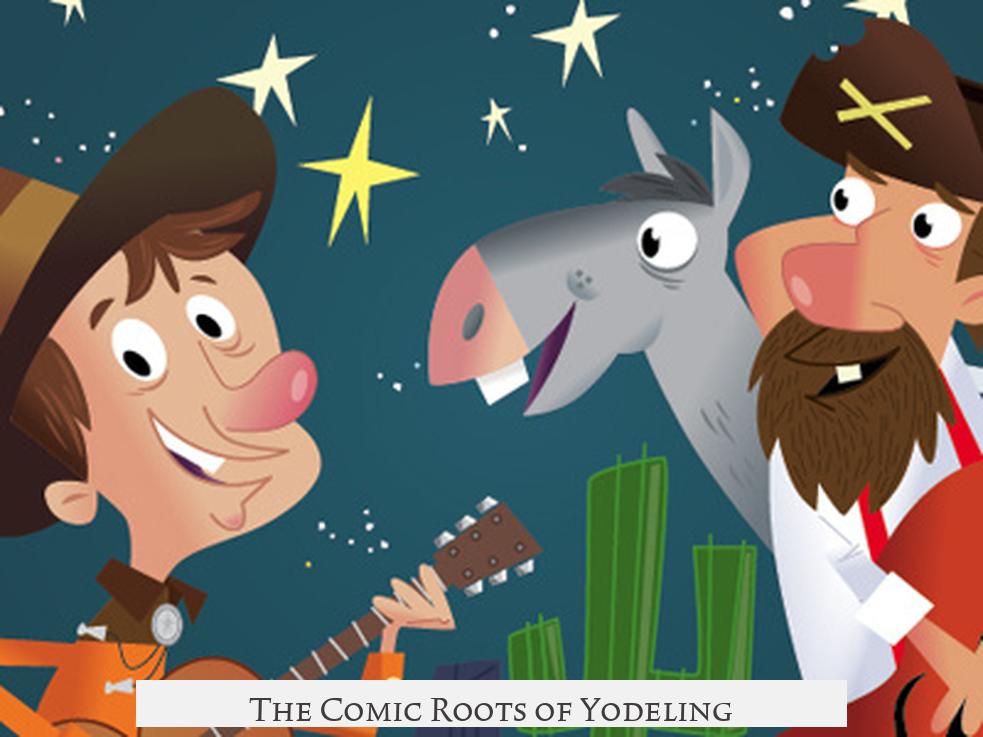
Before yodeling rode off into cowboy culture, it hobnobbed with comic stage performances—and yes, some of those shows had pretty ugly racial stereotyping. Among these was a genre called minstrel shows, which often trafficked in racist caricatures. But minstrel shows weren’t just about Black stereotypes; they involved a potpourri of ethnic types, including the caricatures of German immigrants.
Enter the bumbling German character Fritz Van Vonderblinkenstoffen, brought to life by composer Joseph K. Emmet. Fritz starred in multiple comic plays, such as The Adventures of Fritz, Our Cousin-German, where yodeling was a key part of the comedic shtick. This wasn’t yodeling in the cowboy sense but an ethnic musical cue to signal “German-ness”—a playful (yet stereotypical) nod to Alpine culture for the audience.
Here’s where things get interesting. Circa the turn of the 20th century, yodeling performances began escaping their ethnic stereotype cage. Ragtime music was sweeping across the country, influencing popular tunes everywhere. Yodeling absorbed this new flavor and began mixing with imagery associated with Black culture and the American South. That context shift laid groundwork for yodeling’s eventual cowboy makeover.
The Birth of the Singing Cowboy
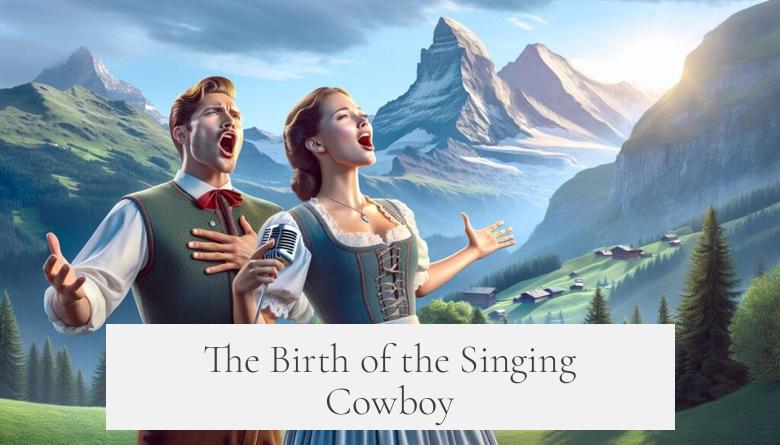
Now, where do cowboys step into this yodeling tale? Around the same time ragtime and minstrel tunes evolved, the singing cowboy emerged as a beloved archetype in American popular culture. Hollywood and minstrel shows alike spotlighted this rugged figure.
The key pioneer? Jimmie Rodgers, often called the “Father of Country Music.” Rodgers popularized yodeling within his songs, blending it with narratives about cowboys and the rural lifestyle. Songs like The Cowhand’s Last Ride and Yodeling Cowboy feature his signature yodel, which captivated audiences nationwide.
Rodgers’ success shone a spotlight on yodeling as a musical hallmark of the cowboy persona. Music labels eagerly encouraged other hillbilly singers to yodel, cementing the sound’s association with blue-collar, white rural workers—many visually tied to cowboy imagery. Blues yodeling morphed from a minstrel era curiosity into a staple of the cowboy’s musical brand.
The Myth and the Reality
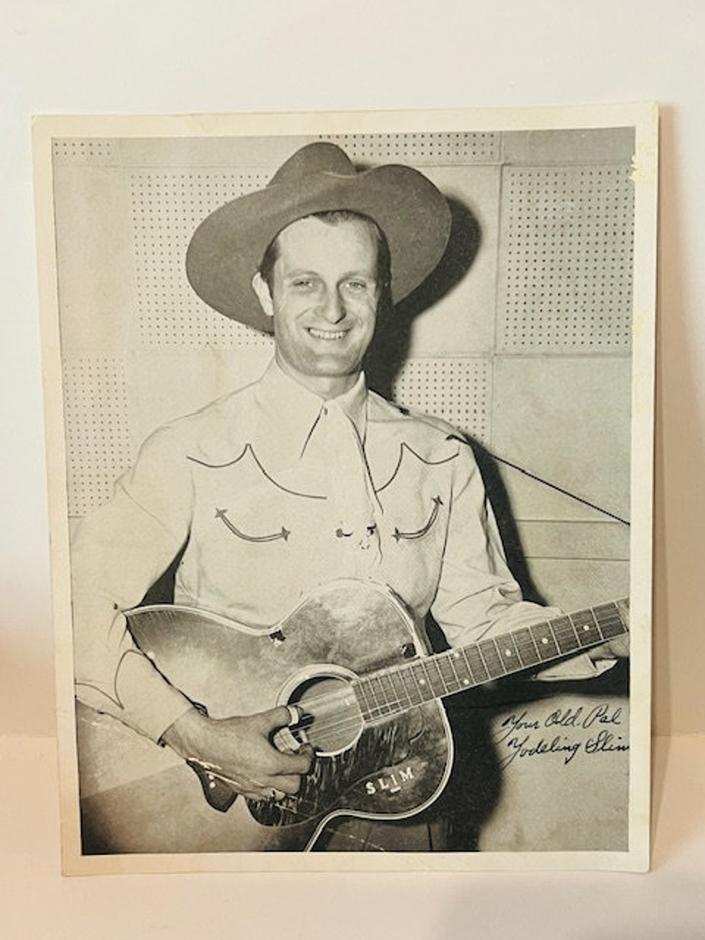
So, let’s clear the dust: actual cowboys on the range probably yodeled little, if at all. Their songs were more straightforward ballads or work chants, grounded in daily life on the plains. It was comic theater—and later, mass media—that rewired yodeling’s identity. What began as a German immigrant joke on stage transformed, through ragtime and minstrelsy, into a sound symbolic of the Old West cowboy.
This blend of realities and stereotypes created a potent myth. John Lomax’s romanticized cowboy icon, infused with a yodeling soundtrack imported from minstrel stage antics, became the enduring cultural image.
Why Does This Matter?
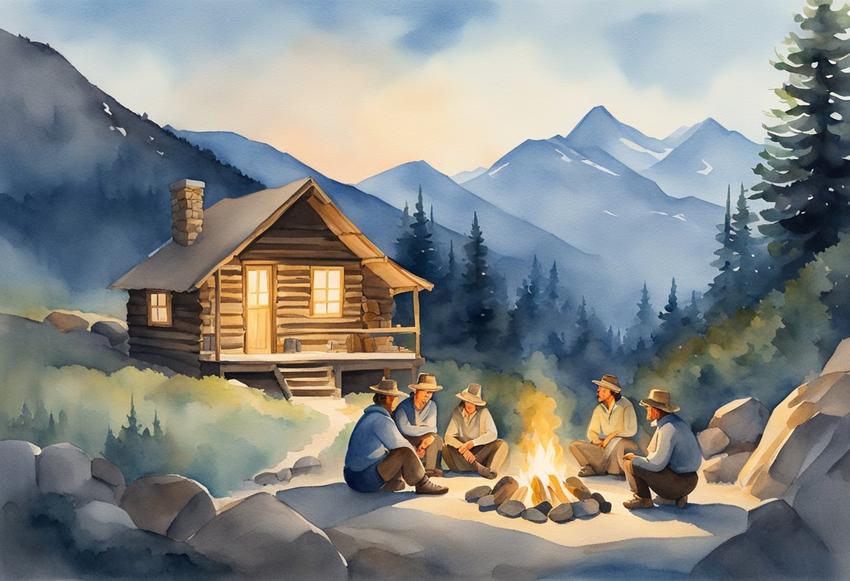
Understanding yodeling’s curious detour into cowboy culture shines light on how popular culture shapes and reshapes stereotypes. It’s a reminder that what we think of as “authentic” often has layers of theatricality, comedy, and cultural borrowing behind it. It also illustrates how musical genres and symbols can migrate across cultures and contexts, sometimes in surprising ways.
So next time someone belts out a cowboy yodel, remember: they’re not just echoing cowboys on the plains—they’re channeling a centuries-old stage act gone wild, mixing German Alpine calls with ragtime beats and Old West dreams. History and humor ride side-saddle in that echoing “yodel-ay-hee-hoo!”
Quick Tips for Aspiring Yodeling Cowboys
- Study the albums of Jimmie Rodgers to get a taste of early cowboy yodeling.
- Don’t be shy to experiment moving quickly between falsetto and chest voice—that’s the heart of yodeling.
- Watch old minstrel and ragtime performances online for historical context (but be critical of their outdated stereotypes).
- Embrace yodeling as a bridge between cultures, not just a cowboy cliché.
In the end, yodeling in cowboy culture is a fascinating tale of transformation: a vocal technique from Alpine herders, turned stage comedy joke, repurposed as a symbol of American frontier spirit. And that’s no tall tale!
